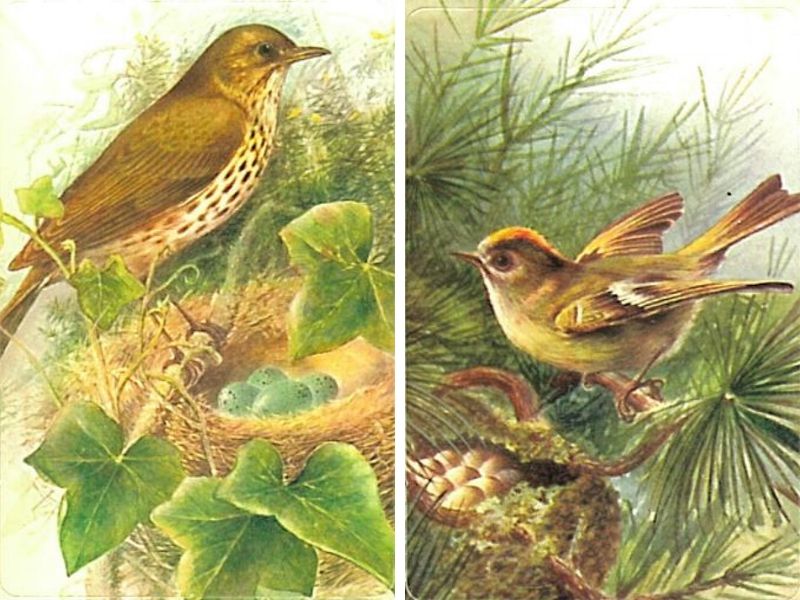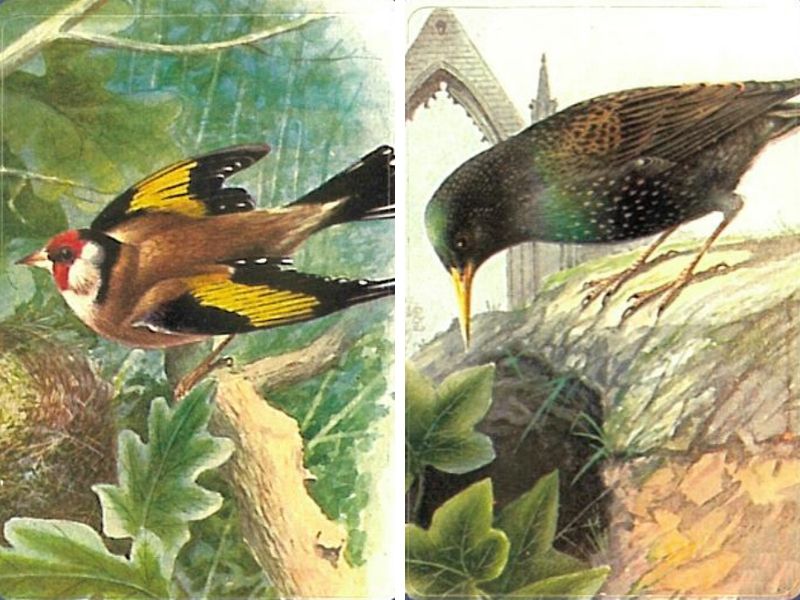I threw a picnic in our garden the other day. We were busy with all…
A very English pastime: bird feeding
The English love feeding their wild birds and spend an incredible amount of £200-300 million on bird food per year which is double the amount spent on the continent. Almost every household has a bird feeder and different types of bird feed from suet balls to dried worms and seeds.
Realising how big of a hobby it is in England – I am sure we can classify it as a hobby – was strange. Not that we would not feed birds in my home country (Hungary) during the winter months. I remember, my grandma used to hang the skin of a pork joint outside the window for the birds to get some fat during the freezing cold winter, but that was about it. In the nursery we made some DIY bird feeders using different objects and put some seeds, pork rind and walnuts in them. I am sure bird feeding has changed in Hungary since I was a kid, but I am confident we have a lot to learn from the English as far as bird feeding is concerned.

How did the hobby of bird feeding start?
To be frank, I am not really sure and I can only rely on what I have read so far in various topics. In the 19th century it became fashionable among aristocrats to keep exotic animals on their estates. Those who served and made their wealth in India, or another country of the British Empire, often returned with animals like baboons, lions, snakes, zebras and parrots. This is well depicted in the Speckled Band Sherlock Holmes episode.
Because of this, the wealthy built menageries and aviaries on their estates, later zoos were built for the public. No wonder then that bird feeding became a hobby of all classes by the beginning of the 20th century: it was available for everyone. In fact, at the beginning of the 20th century the Punch Magazine described bird feeding as a British national pastime.
Bird feeding surely evolved since, especially after the 1970s when only two breeds visited bird feeders: sparrows and starlings. In our small garden at least a dozen of different types of birds turn up. These are: doves, wood-pigeons, magpies, jays, blackbirds, great tits, blue tits, robins sparrows, wrens, chaffinch.
I think this somewhat explains why it is good feeding birds. There is something comforting and relaxing in watching the different birds coming and going, to listen to their songs at dawn and dusk and also to learn more about them – to recognise them to start with. I must admit, when we started to put seeds out in our garden and the first time a bird with bluish wings turned up, we had no idea it was a jay and we had to look it up in our books and online (at last those books sitting on the shelves are used again!). Then, if you are lucky or have a distinctive feature of a bird, you may recognise those who regularly return. For instance we have a magpie with a bad leg who has been coming back for more than 2 years and we can spot him instantly and we are pleased he keeps coming back.

The impacts
As for the impacts of bird feeding it has positives and negatives. Due to feeding in the 1980’s only 18 species visited the gardens of the British, today this number is much higher, approaching 130, so the hobby of the British supported population growth in some bird species, and has increased the diversity of species visiting the feeders. On the negative side:
- fostering habits change
- change of natural diet
- disease transmission at feeders
- altering natural distribution, density and migration patterns
- gray squirrels eat not only food meant for birds but eggs from nests during the breeding season when nests are close to bird feeders.
Therefore, you have to be wise when you feed birds. If possible, keep squirrels away (I know it is difficult) and try to feed birds only in cold weather. For example, we only feed them from late autumn until early spring plus we keep a few days break between feeding, i.e. there is not food out there all the time. As soon as the weather turns better, we stop feeding them and allow them to forge for their food in nature.
Interesting facts:
- Pigeons, magpies and freely living parrots (yes the latter do exist in Britain, you can read about them here) can be freely shot.
- In some cities or parts of cities for example Trafalgar Square, feeding birds is forbidden because of pollution and dirt.




Comments (0)